I Wrote the Book on Doughnuts
Literally. My book, A Baker’s Field Guide to Doughnuts contains dozens and dozens of doughnuts: fried, baked, fancy, plain, a Krispy Kreme copycat recipe and even gluten-free. But wouldn’t you know it, I had not developed a recipe for a gluten-free yeast-raised jelly doughnut. So, into the FODMAP Everyday® Test Kitchen I went to bring you our Jelly Doughnuts (Sufganiyot) for Hanukkah – or anytime you want a gluten-free jelly-doughnut!
EDITOR’s NOTE: The original recipe on this page gave some folks trouble at home, so I not only re-worked it, to be a much easier and more reliable recipe, but I even created two Jelly Doughnut recipes for you, both of which are suitable for Hanukkah – or as I said above – anytime you want a gluten-free jelly-doughnut!
There are two main differences: This doughnut is filled with jelly AFTER frying and our Low FODMAP Jelly Donut is filled before. This doughnut is cakier in texture, due to the milk and additional egg, even though it is still a yeast-raised doughnut, and the other is much springier and spongier and more yeast-like, and also happens to be dairy-free.
So now you have a choice of technique and also texture.
Latkes or Jelly Doughnuts?
Is that really a fair question? We say yes to both. (Check out our latke recipe, too). Maybe not at the same meal, but they each have a place in our hearts (and mouths).
The reason you will find both in relation to Hanukkah is that both are deep-fried in oil and Jews celebrate the miracle of a small quantity of oil that lit their Temple’s menorah for eight days when the amount was really only enough for one night.
Choose Your Filling Wisely
The quality of the jam really makes these jelly doughnuts so buy a really delicious strawberry jam. We are partial to ones that have strawberries listed as the first ingredient, as they are very fruity, but many will list sugar first, and that is okay. Pectin is fine too as are lemon juice and citric acid.
And now that Monash has lab tested and approved of raspberry jam, you could use that as well in the same amounts.
Steer clear of any jams or jelly that list high fructose corn syrup as an ingredient, which you can read about here.
Tips on Piping the Filling Into the Donut
Now, this jam has to get piped inside the fried doughnuts and that is most easily accomplished with a pastry bag and tip. The jam has to be thin enough to flow through the tip – and certainly not chunky as many fruit-filled jams are.
If yours is pretty thick and chunky, try the following. First, turn some out into a bowl and stir vigorously. It will thin out a bit and that might be all you need. If it needs more help, press through a wire-meshed strainer to remove any large pieces of strawberry.
Using the Right Tools
Note that you should have a deep-fry thermometer handy for frying the doughnuts. You also need a pastry bag and small round tip for getting the jelly into the doughnuts. Some folks say you can do this with a plastic bag with the tip cut off; I have never had success with this and do not recommend it.
If you like specialty items, consider getting a Bismarck tip as seen in the image below. It is meant just for this purpose. Works well with cream puffs, too.
By the way, you won’t taste the cinnamon and nutmeg in the dough; they just make it a little more interesting and less plain.
How To Make Jelly Doughnuts
Using rapid-rise or instant yeast makes these easy. No need to proof the yeast in liquid before starting.
Whisk your room temperature eggs, oil and vanilla together in a small bowl and set aside. You could use melted butter, which will give the dough more flavor, but the oil keeps the dough extra-spongy.
Combine your dry ingredients in your mixer bowl: flour, sugar, yeast, xanthan gum, salt, cinnamon and nutmeg.
Your milk should be warm, about 110°F to 115°F (43°C to 45°C). Use an instant-read thermometer to gauge temperature. If it is too hot, simply wait a few minutes, stirring it to disperse heat.
Pour it over the dry mixture and beat it with a flat paddle until it begins to come together, then drizzle in the egg/oil mixture as well. Beat it well and you will see that it comes together very quickly and will not be sticky. If it is sticky, keep beating it a bit.
Roll out the dough on a floured surface or piece of parchment paper. Cut out your doughnuts with a cookie or biscuit cutter. Just like with biscuits, do not twist the cutter. That would seal the sides and inhibit rising and a nice “puff”.
Arrange them spaced apart on a parchment lined pan, cover with plastic wrap and set in a warm, draft-free place to rise for 1 hour.
After an hour they should look risen and puffy.
Once your oil comes to temperature, fry them just a few at a time to allow them to move freely around in the hot fat. Simply fry till golden, flipping over once.
Toss your jelly doughnuts in sugar (or cinnamon sugar) while still very warm.
Fill them with jelly or jam as soon as you can handle them – and serve immediately!
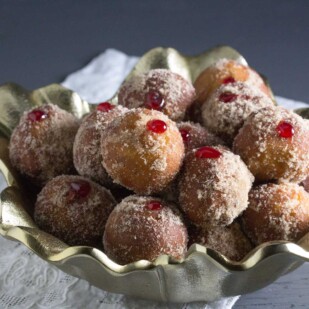
Jelly Doughnuts - Sufganiyot (Gluten Free)
Jelly Doughnuts (Sufganiyot) for Hanukkah - or anytime you want a gluten-free jelly-doughnut!
Low FODMAP Serving size Info: Makes about 16 doughnuts; 1 doughnut per serving
Ingredients:
Doughnuts:
- 2 large eggs, at room temperature
- 2 tablespoons neutral flavored oil
- 1 teaspoon vanilla extract
- Scant 2 cups (172g) low FODMAP all-purpose gluten-free flour, such as Bob’s Red Mill 1 to 1 Baking Flour
- 2 tablespoons sugar
- 1 tablespoons instant or rapid-rise yeast, such as Saf-Instant Yeast
- 1 teaspoon xanthan gum
- 1/2 teaspoon salt
- Pinch cinnamon
- Pinch nutmeg
- 1/2 cup (120 ml) warm lactose-free whole milk (110°F to 115°F; 43°C to 45°C)
- Neutral flavored oil such as canola or rice bran oil
Preparation:
-
For the Doughnuts: Line a half-sheet pan with parchment paper; set aside. Whisk the eggs, 2 tablespoons of oil and vanilla together in a small bowl or measuring cup with spout and set aside.
-
In the bowl of a stand mixer fitted with a flat paddle add the flour, sugar, yeast, xanthan gum, salt, cinnamon and nutmeg and mix on low speed briefly to combine.
-
Add the warm milk and the beaten egg mixture to the flour mixture and mix on medium speed until the dough comes together; it will pull away fairly cleanly from the sides of the bowl. Scrape down and keep mixing for about a minute or 2 or until the dough is soft, not sticky at all and can form a cohesive shape.
-
Dust your work surface and rolling pin with extra flour and roll out your dough to about a scant 1/2-inch (12 mm) thick. Using a 2 1/4-inch (5.5 cm) cookie cutter, cut out about 16 rounds. Place on prepared sheet pan, cover with plastic wrap and set in a warm, draft-free place to rise for 1 hour.
-
After 1 hour your doughnuts should have risen and look soft and puffy. Pour oil to a depth of at least 3-inches (7.5.cm) in a deep sided heavy pot, or prepare your deep-fryer machine. Bring oil to 350°F (180°C). Have two sheet pans nearby, one lined with paper towels and the other lined with a rack. Have the ½ cup (99 g) sugar in a small bowl near the pan with the rack; stir in the cinnamon to the sugar, if using.
-
Use a spatula to carefully lower the donuts into the hot oil. Cook only as many doughnuts as will fit comfortably in your pan, allowing space between them. Fry the donuts for about 1 minute or until golden brown, then flip over and cook the second side for a similar amount of time, again until golden brown. Try to keep the heat between 325°F (165°C) and 350°F (180°C). Use a spider or your spatula to remove the donuts, place on paper towels very briefly to absorb excess oil.
-
For the Topping & Filling: Immediately toss doughnuts in waiting sugar to coat on all sides. Assemble pastry bag and tip and fill with jam. Once the doughnuts are cool enough to handle, pick up doughnuts one at a time, insert tip into center of doughnut and inject with about 1 to 2 teaspoons of jam. Just keep injecting until you see the sides of the doughnut expanding. Place on rack as you finish each one. Serve as close to preparation time as possible. Doughnuts wait for no one!
Dédé's Quick Recipe Tips Video
Notes:
Tips
- Follow the directions exactly, down to the flour that is recommended for best results. This recipe does not provide much wiggle room for success.
FODMAP Information
Our recipes are based on Monash University and FODMAP Friendly science.
- Oil: All pure oils are fats and contain no carbohydrates, therefore they contain no FODMAPs.
- Sugar: Monash University and FODMAP Friendly have both lab tested white, granulated sugar. Monash states that a Green Light low FODMAP serving size of white sugar is ¼ cup (50 g). FODMAP Friendly simply states that they have tested 1 tablespoon and that it is low FODMAP. Regular granulated white sugar is sucrose, which is a disaccharide made up of equal parts glucose and fructose. Sucrose is broken down and absorbed efficiently in the small intestine.
Please always refer to the Monash University & FODMAP Friendly smartphone apps for the most up-to-date lab tested information. As always, your tolerance is what counts; please eat accordingly. The ultimate goal of the low FODMAP diet is to eat as broadly as possible, without triggering symptoms, for the healthiest microbiome.
Nutrition
All nutritional information is based on third-party calculations and should be considered estimates. Actual nutritional content will vary with brands used, measuring methods, portion sizes and more. For a more detailed explanation, please read our article Understanding The Nutrition Panel Within Our Recipes.
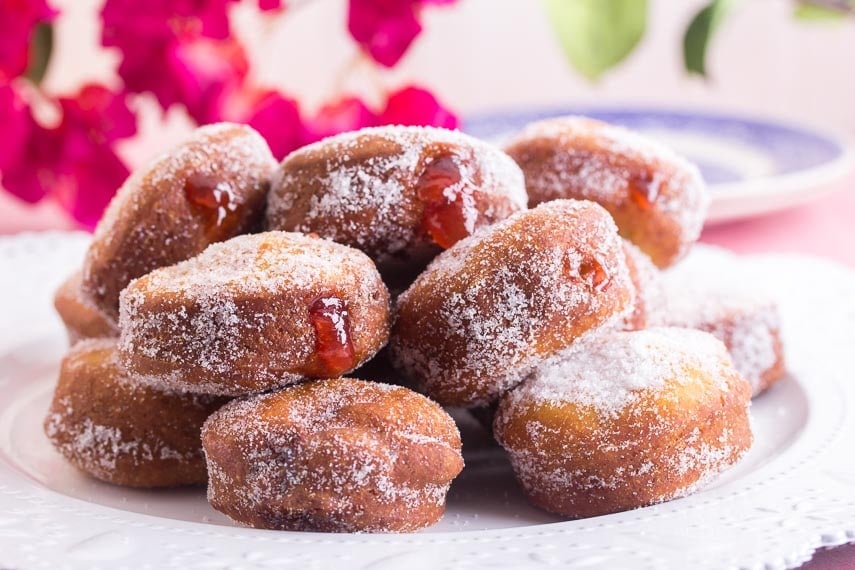
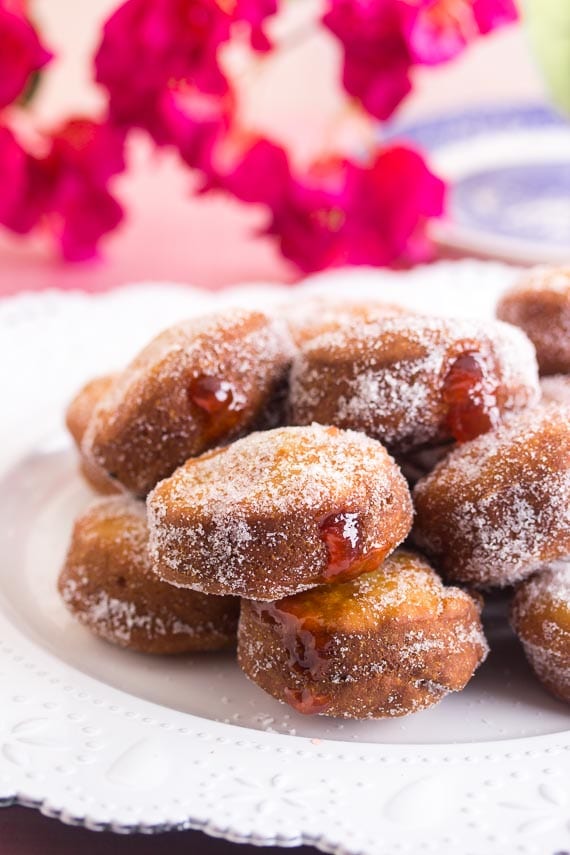
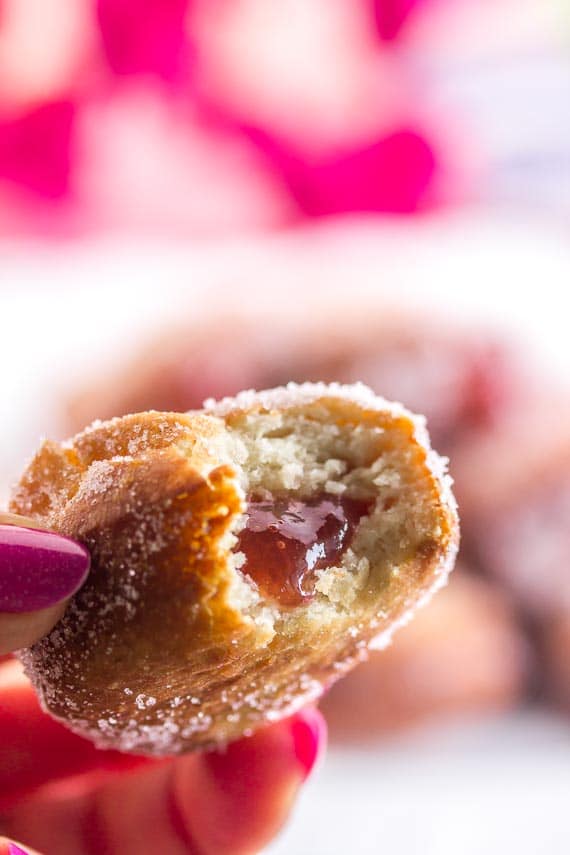
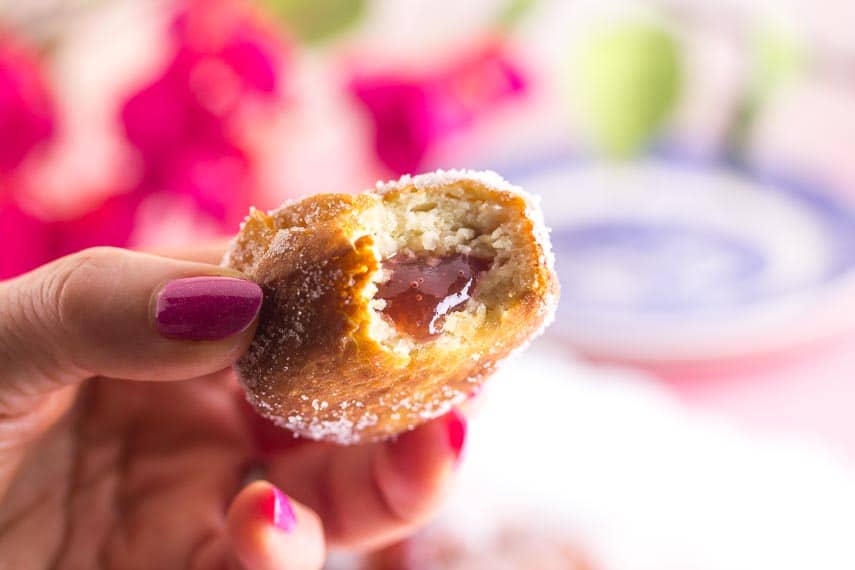
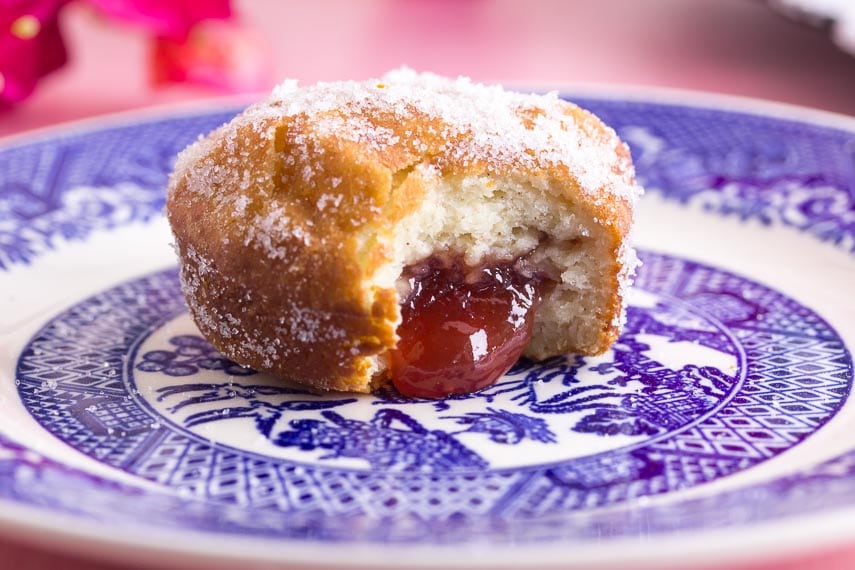
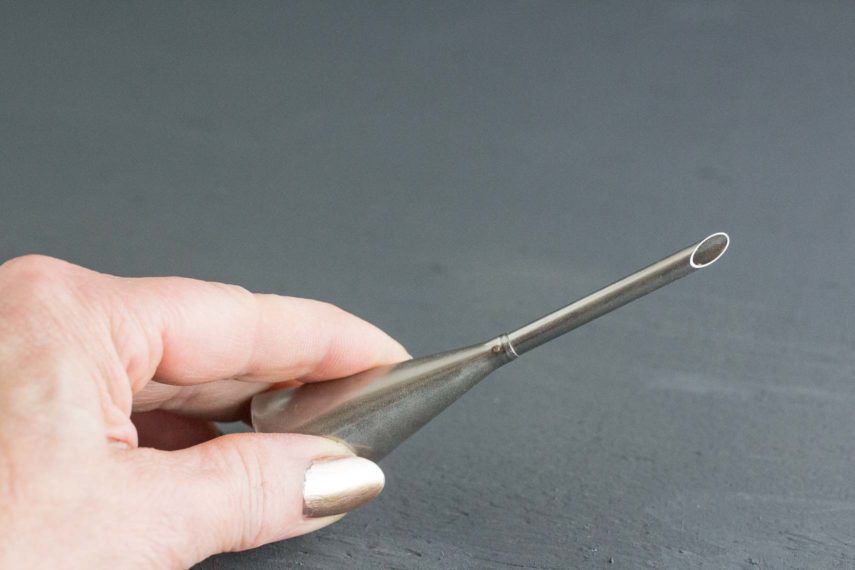
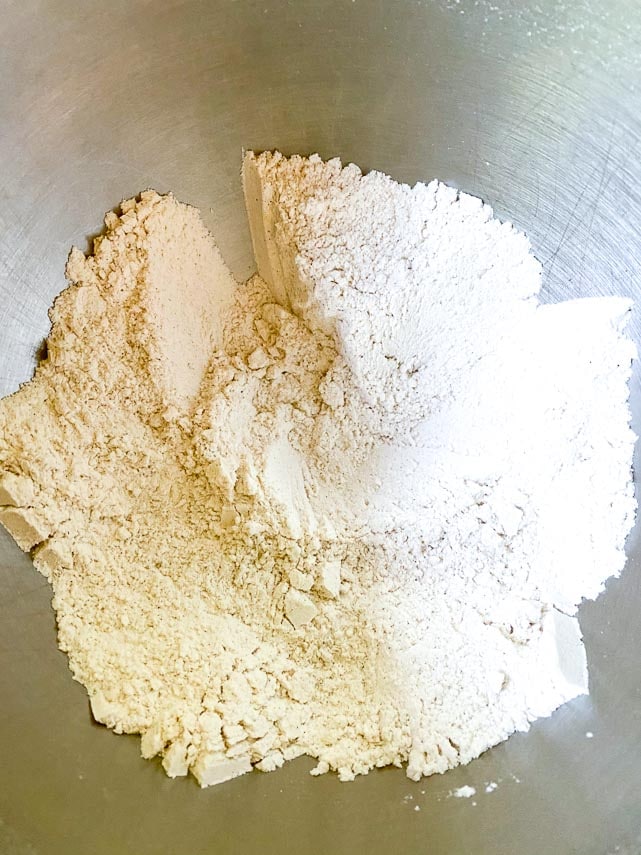
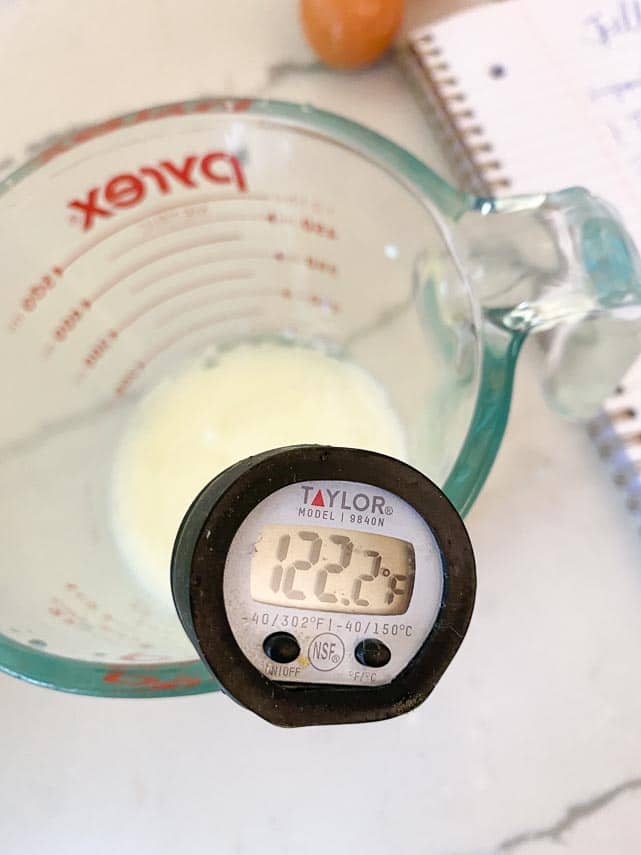
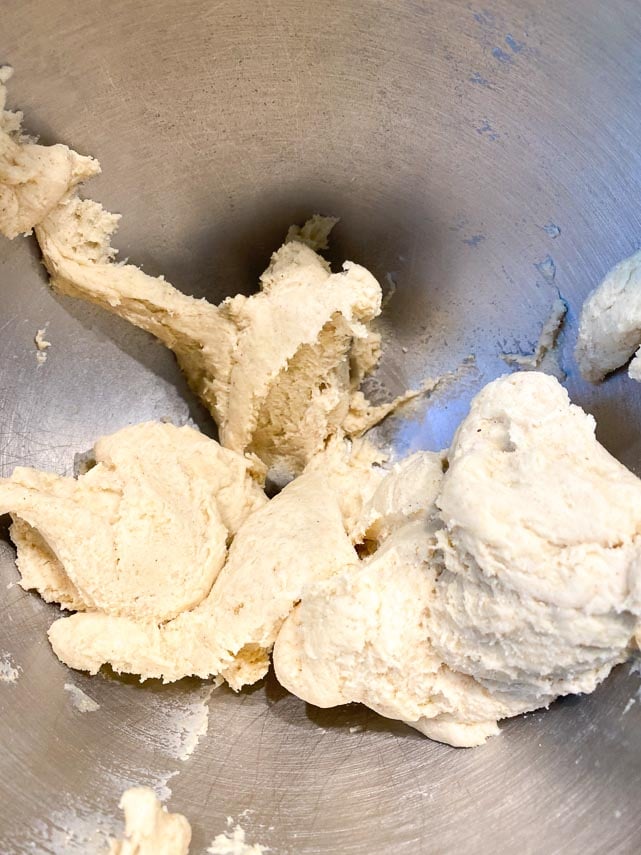
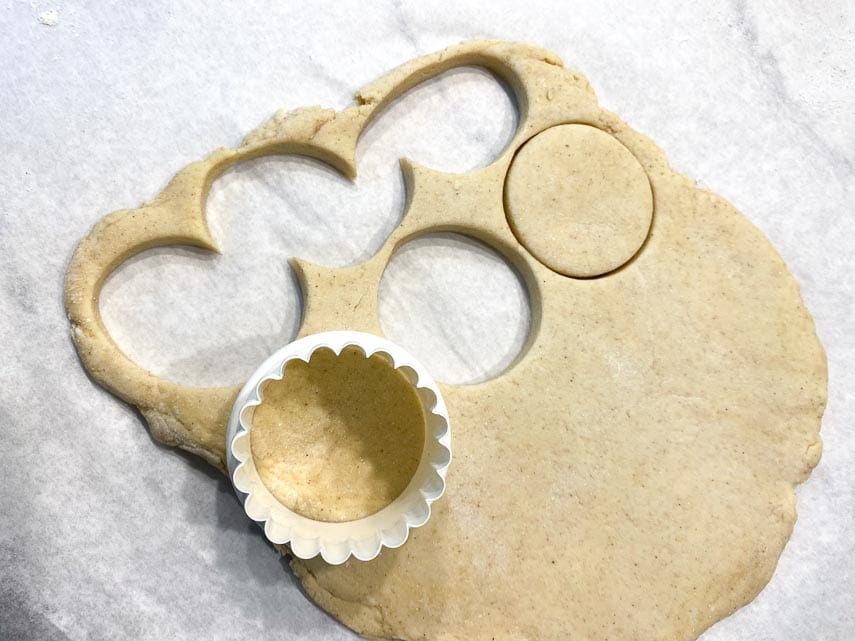
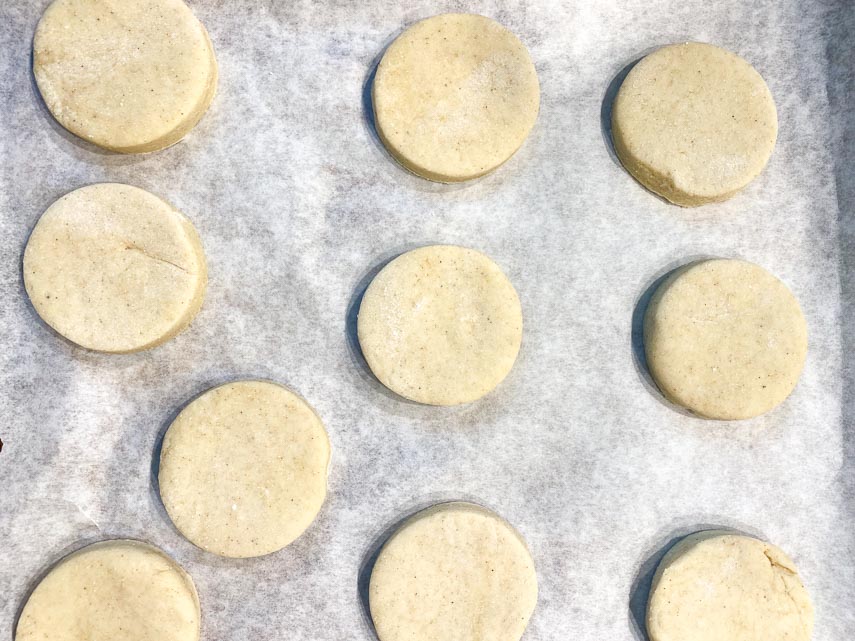
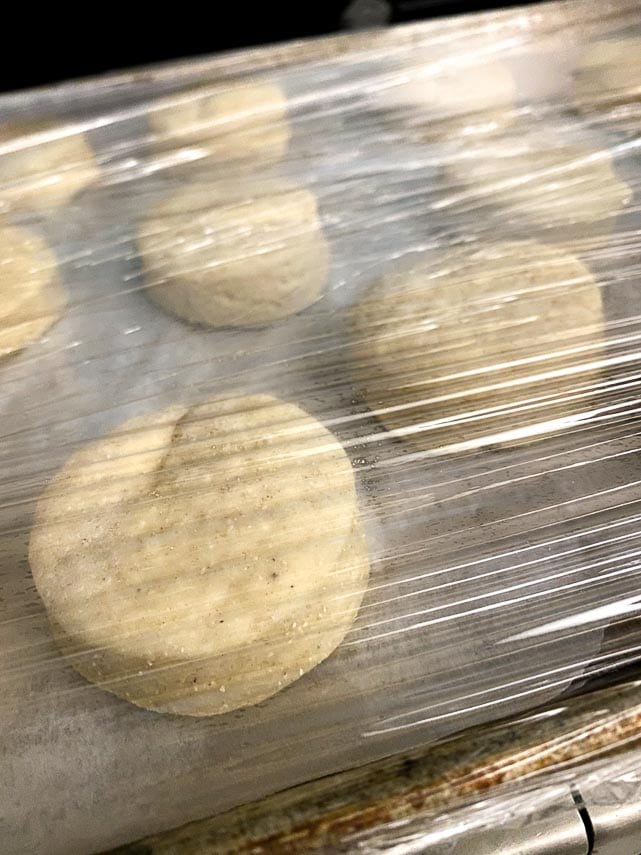
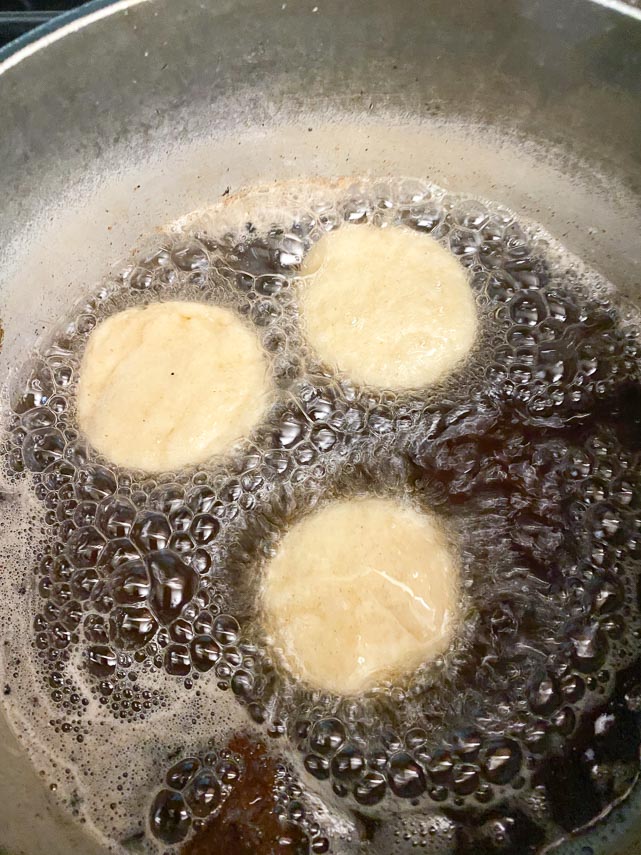
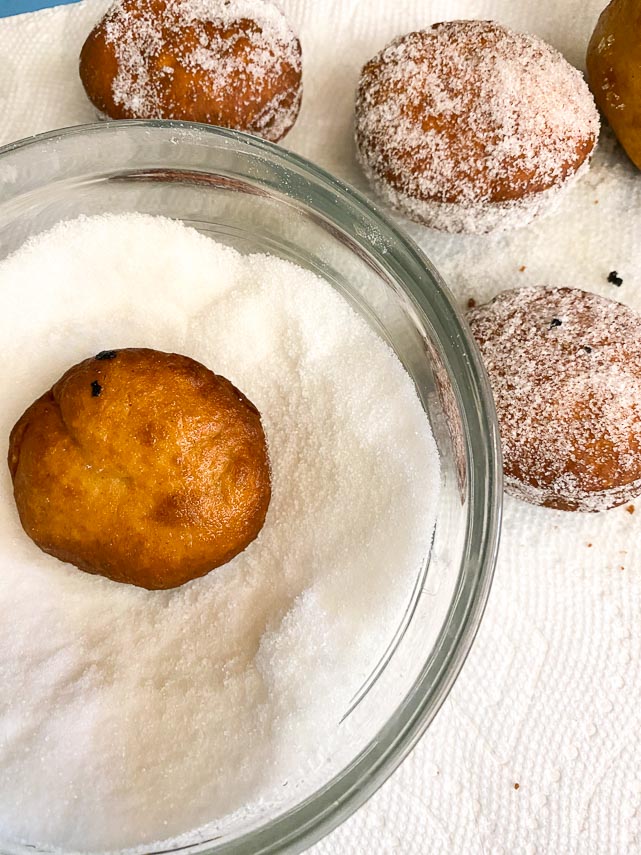
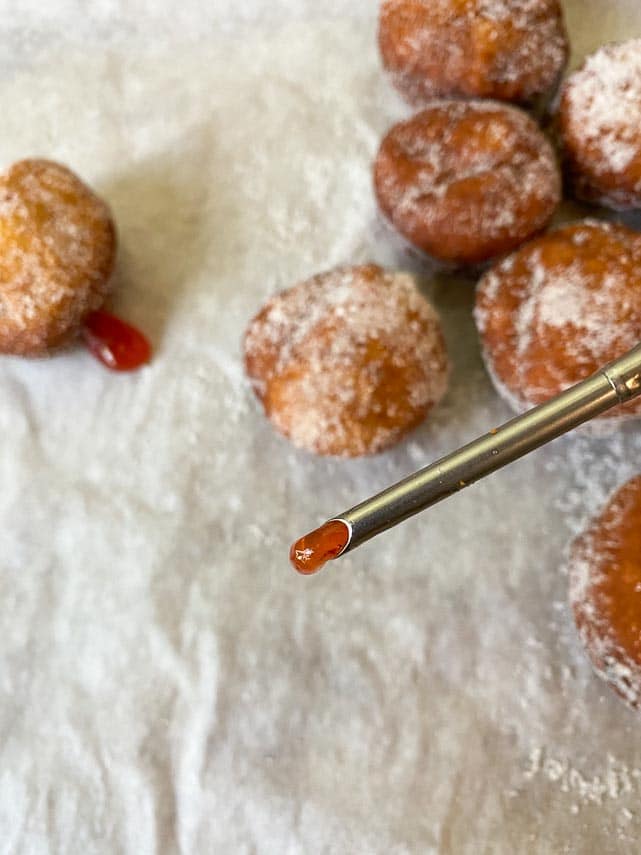
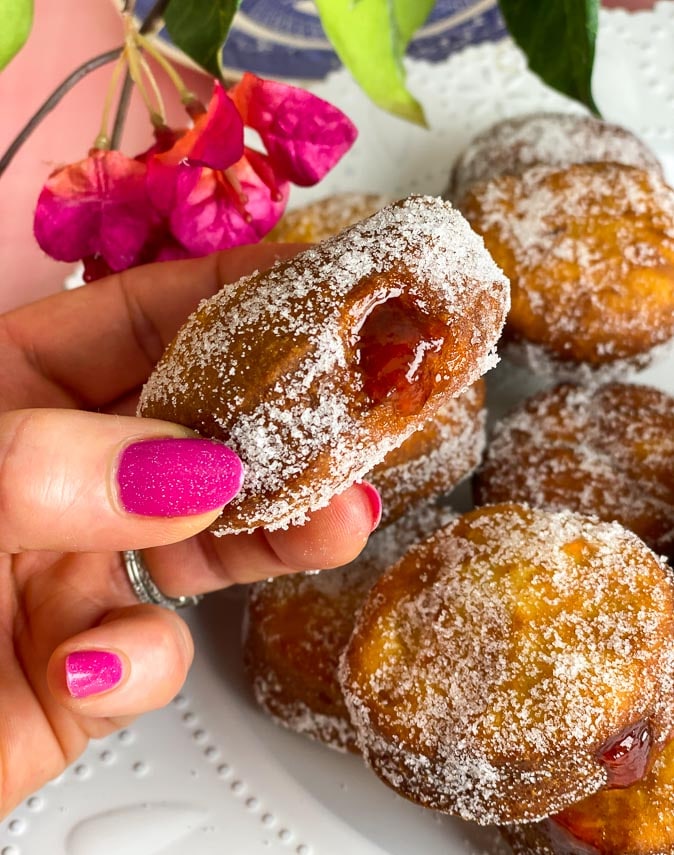
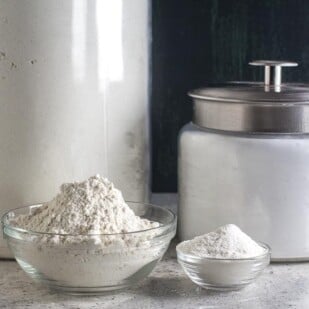
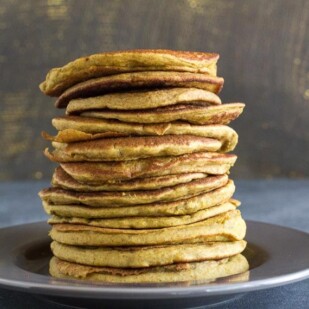



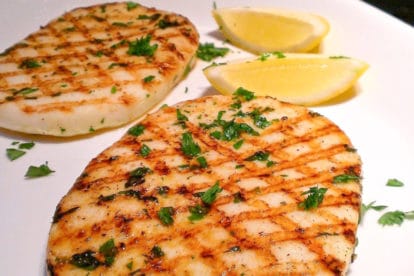
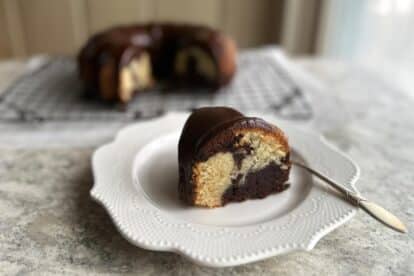
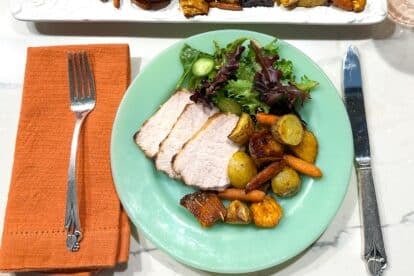
is there a step missing between steps 2 and 3?
The dough is prepared by the end of Step 2. In Step 3 you are placing it in an oiled bowl, then punching down, shaping and placing doughnuts on the prepared, waiting pan. Hopefully this clarifies.
Only use this recipe if you seek to waste resources and disappoint people waiting for fresh sufganiyot.
Hi Joshua, how can we help you troubleshoot for next time? This year we added the step by step images so folks could see the process. Did you use the ingredients called for and measure them as recommended? I would be happy to talk with you, if you like.
Hello,
I am in the middle of making these now. You never mention when to add in the vanilla, cinnamon and nutmeg into the dough. Also, I am not sure how to knead or “work” the dough when it is paste-like. Do I add more flour like I would to a challah/bread dough?
They are added with the flour. You just work it until it comes together into a paste-like consistency. It is softer than challah.
Made these but the dough didnt rise at all. Am going to try again… should I add more yeast?
Perhaps your yeast was not active? Or it was killed during the process? I would not add more. Use a thermometer and make sure you do not kill the yeast (which, by the way is so easy to do!. The photo was of the recipe as written, so it will work!
Can I decrease the amount of sugar or use a alternative sweetener such as stevia or even honey?
Hi Athena, some recipes lend themselves to tweaking and they still work. This recipe is NOT one of those recipes. I would not recommend any substitutions. Doesn’t mean you couldn’t try, but I am doubtful as to the outcome.
The ingredients list calls for “instant dry yeast” but the directions instruct us to use it as “active dry yeast”. Can you please confirm whether I am indeed supposed to use *instant* dry yeast for this recipe?
I recommend active dry yeast.
Great. Thank you for clarifying and for changing the recipe to active instead of instant!
Truth be told I have made them as described with both yeasts, using same directions.
I don’t have a scale. For measuring the flour, did you spoon and level, or scoop from the bag?
Whisk the flour first to aerate, then dip and sweep. This recipe is a bit persnickety. Please use the ingredients called for, such as this specific flour. You might also enjoy reading our article on dry measuring.
This recipe does not turn out as it says. We made the paste but were unable to knead it, too paste like. Then the paste never rised for us either. They turned out somewhere in between funnel cakes and cake doughnuts. They were good but I’m definitely using a different recipe next time.
Hi Hannah, I am so sorry that you had issues. As you can see in the images and comments, we and others have had success, but as I hope I made very clear, this is one persnickety recipe! Some recipes have a lot of wiggle room. This is not one of one recipes. I would love to help you troubleshoot. Did you use the exact ingredients called for? Were they measured as required? Was temperature paid attention to etc. Let me know if you would like some help with this! We want you to enjoy your doughnuts.
We followed the recipe exactly as instructed and they turned out terribly. The dough never rose at all and the donuts were hard, crumbly and dense. They were extremely hard to fill and many broke during that process. They turned out very very dry. I’ve never had such an issue with gluten free baking. I wonder if the issue was that the recipe doesn’t call for baking soda or baking powder. What we made look nothing like the light, fluffy ones in the pictures. Will not be making these again.
Hi Gavi,
So sorry to hear that the recipe did not work for you. As I mentioned several times in the recipe this one is particularly persnickety. The images you see are of the recipe as presented. I would triple check that you used the exact ingredients called for, and followed required technique, including proper measuring of ingredients. This article might offer you some more information